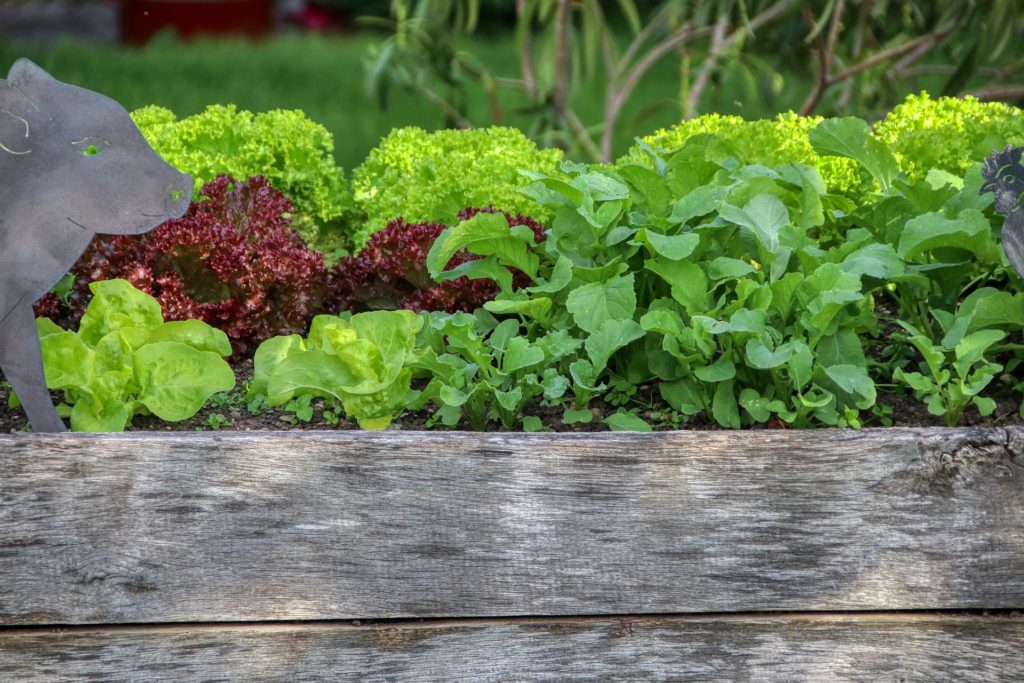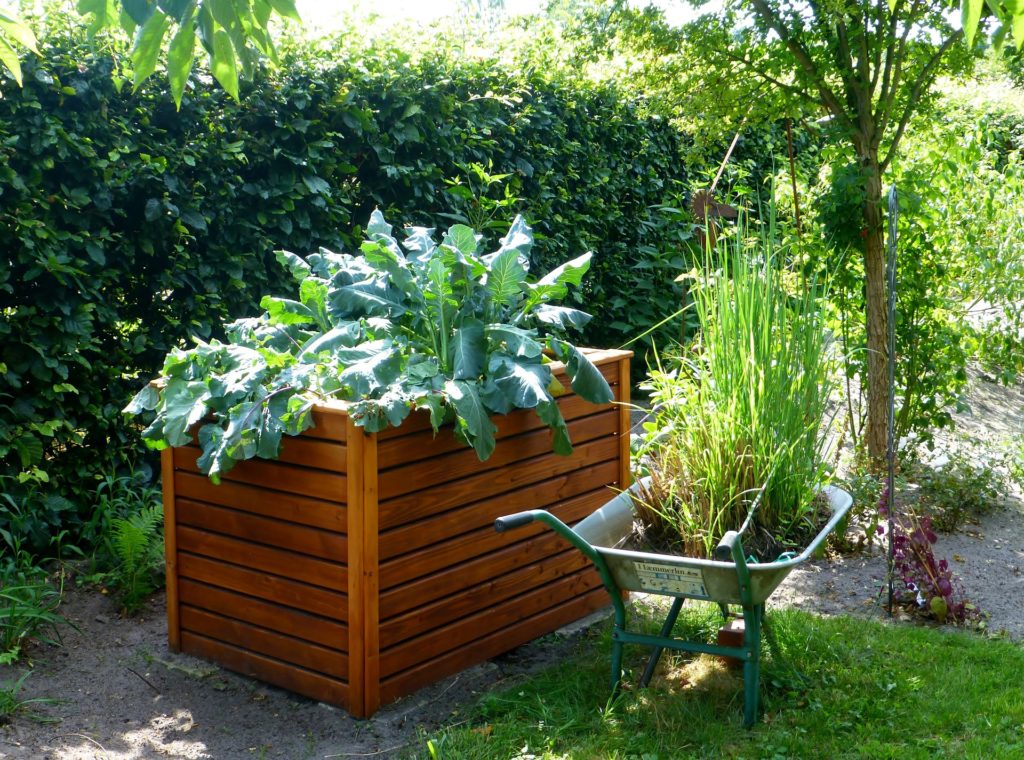If you’re looking for a way to get the most out of your garden, you should consider raised bed gardening. Raised bed gardens offer many benefits, including increased production, improved soil quality, and more control over the environment. In this blog post, we will discuss the top 10 benefits of raised bed gardening and how to get started!
Introduction to Raised Bed Gardening
Raised bed gardening is the practice of growing plants in raised beds that are higher than usual soil levels in the garden. They’re generally housed inside a wooden frame, which is usually rectangular in shape. The earth may be combined with tilled soil below or simply fresh dirt laid on top of the untilled ground.


Benefits to Growing Plants in Raised Beds
One of the biggest benefits is the ability to harvest more produce from the same space. Raised bed gardens can actually double or even triple the amount of produce harvested from the space! This is due to the fact that the square footage needed for pathways is reduced considerably, and more space can be devoted to the plants.
Another advantage of growing in raised beds is that you may better improve the quality of your soil more readily, and you may even cultivate plants in locations with extremely poor soil. It might be tough to grow anything in a sandy garden or have a lot of clay. However, if you make a raised bed, you can simply fill it with your own cultivated soil mix. This will give your plants a much better chance to thrive.
Weeds are also less likely to invade your garden when you grow in raised beds. The soil is less likely to become compacted, so the roots of your plants have more room to breathe and spread out. Raised bed gardens also tend to be warmer than ground-level gardens, so you can start your plants earlier in the season and harvest later into the fall.
The frames may also be topped with a base and put on tables to allow disabled and elderly persons to reach their plants more easily. This is a significant advantage for individuals who would otherwise be unable to properly care for a garden.
Square Foot Gardening?
Mel Bartholomew popularized this style of gardening in his book and television series Square Foot Gardening. He created a method that takes up 80 percent less space than traditional types of gardening.
Instead of being just a standard raised bed, the bed is divided into sections that house plants of various sizes. It uses a special soil mix that is free of weeds and is ideal for growing almost any kind of plants. It uses less water, is all organic, and uses far fewer seeds than traditional gardening. His system claims you can produce 5 times more in the same space of a traditional garden.
The system divides each square foot into a grid, based on what type of plants you wish to grow in that section. If you want to grow a large plant like broccoli or cabbage, it would take one entire square foot, so that section wouldn’t be divided at all. If you want to grow radishes, you might section that square foot into sixteen separate spaces, each one housing a single radish!
Other similar systems have been brought out. Cubed Foot Gardening is very similar to Square Foot Gardening. The creator of this particular system is Christopher O. Bird, and he credits Mel Bartholomew for creating the original system. Bartholomew even gave the system an endorsement!
You don’t have to use a grid system at all. You can use a raised bed to plant a wildflower garden or an herb garden with no definable organization. This works just fine. You don’t have to restrict yourself to a grid-based system if you don’t want to. Raised beds are very flexible!
Why Raised Beds Make Gardening Easier
Raised beds make gardening easier in many ways. They help you solve difficult issues with your soil, they aid in controlling pests, they improve the amount of produce you can harvest in an area, they’re great at reducing weeds, and they help conserve water.
Any plants that love well-drained soil can benefit from being grown in raised beds. You don’t have to raise just vegetables. You can also easily grow herbs, fruits, and flowers in raised beds and make your job easier.
In raised bed gardening, the soil is usually put into frames that are about three or four feet wide and any length. The soil is generally enriched with compost and is added to a frame made of wood or other material.
The plants in raised bed gardening are planted much closer together than the plants in a traditional garden. This allows the plants to conserve moisture and also helps block the sun from allowing weeds to germinate and grow.
Raised beds can be used to extend the growing season, making it easier to start seeds outdoors earlier, and grow later in the season. This is a great way to get even more produce out of the area in a season.
If you have soil problems in your garden, you can use raised beds and just bypass your own soil completely. If you start with completely fresh soil, it doesn’t matter what type of soil you had in your garden, to begin with.
Another great benefit of raised bed gardening is the fact that the gardener doesn’t walk on the soil in which the plants are growing. This helps prevent the soil from being packed down, so the roots can grow through the soil more readily.


You don’t need to till the soil under a raised bed if you don’t want to. This is very beneficial for people who can’t afford a tiller, or who aren’t physically capable of handling a piece of machinery like this.
You won’t have to water raised beds as often as you would a traditional garden. The soil in raised beds is designed specifically to hold on to water, so you can water less often and in smaller quantities. This is great for conserving water and saving money.
Frames can be built on top of plywood bases, and then raised to any height. This allows handicapped and elderly people to easily reach their plants to tend to them. For people in wheelchairs, this could be one of the only ways they can garden well.
Diseases and pests are easier to control in raised beds. Since you’re starting with fresh soil, it’s less likely to be contaminated with diseases that could infect your plants. If your plants do become infected, you can simply dispose of the soil in that bed and start again from scratch.
And pests are easier to control because plants are in a more confined area. This makes it much easier to spot potential problems, and it also makes it easier to get rid of potential problems before they take over your entire garden.


Materials Needed for Raised Bed Gardening
All you need to get started with raised bed gardening is a few simple materials. You’ll need some lumber or other material to make the frames, soil, compost, and plants.
The first step in creating a raised bed garden is to decide how large you’d like it to be. It should be no wider than 4 feet, so you can reach comfortably to end to plants from both sides, but it can be as long as you’d like. Most people stick with 4×4 foot plots, and you can do many 4×4 foot plots or one 4×12 or 4×20 or whatever you want!
You can build your frame out of standard lumber. 2×6 lumber is good enough for a frame that will house shallow-root vegetables such as radishes, lettuce, and spinach. If you want to grow larger vegetables like corn or tomatoes, you’ll need 2×12 boards, so your soil can be at least 10 inches deep.
Opinion varies on whether or not you should use treated lumber. Use untreated lumber and it will rot within a few years and you’ll have to start your garden all over from scratch. If you use treated wood, it has a small potential to leech toxic chemicals into the soil which might be picked up by your plants and passed to you.
To be on the safe side, you should stick with untreated wood. But treated wood is very convenient, and many scientists claim the chances of anyone actually being harmed by the small number of chemicals that might leech into the soil would be minuscule. This is a personal choice, so whatever you decide is right for you is just fine.
You should have your lumber cut for you when you buy it. You need the lumber ends to be perfectly even so the soil won’t leak out once you put your raised bed together. This is extremely difficult to do yourself unless you have a large saw. A circular saw or handsaw probably won’t cut it.
You’ll need to use three 4-inch ribbed deck nails at each joint to put your frame together. Other types of deck nails just won’t hold tightly enough to ensure your bed won’t fall apart until the pressure of all that soil and plant material.
You should assemble the frame on a flat, level surface, not directly in the garden if you can help it. Your frame will be much sturdier if it’s assembled on your deck or driveway. Then you might require help moving it to the garden, as it will probably be heavy.
You should leave a minimum of two feet between boxes, preferably three feet. You need enough room to move around comfortably. Be sure to choose a good location right from the start, because once they’re filled with soil, it’d be impossible to move without emptying them!
Your soil should be the highest quality soil you can manage. If you purchase commercial potting soil it generally won’t be high enough quality. You’ll need to add more organic material to this soil. You can use homemade compost, composted manure, or other rich organic material to make the soil you use the best possible quality.
Most plants will grow just fine in the 6 or 12 inches of soil inside the frame, and they should be able to push through the ground if they really need to. As long as you provide very high-quality soil with plenty of organic material, your plants should never need to shoot roots down past those 12 inches.
Soil for raised bed gardening needs to be well-drained, so it’s important to use a soil mix or to amend your soil with compost. Compost is key for raised bed gardening because it helps to keep the soil well-drained and enriched. You can either make your own compost or buy it from a garden center.
Once you have the materials, you can start building your raised beds.

